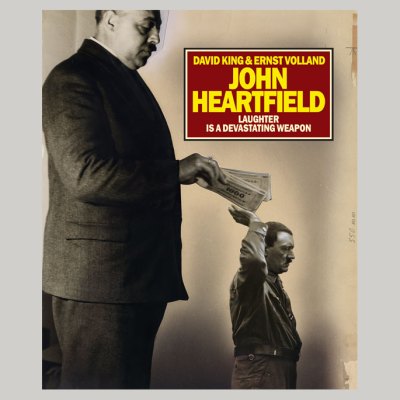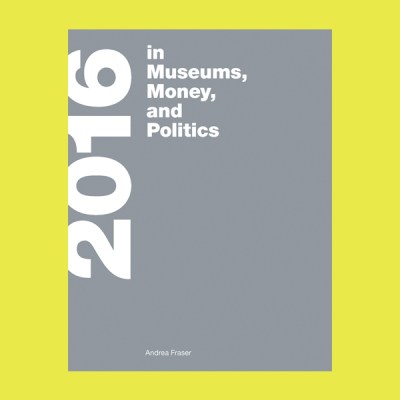Jiří Kolář’s Diary 1968 runs like a spine through this survey of the artist’s work at the Kinsky Palace in Prague. The series of 66 collages, with which the artist and poet, then in his 50s, bore witness to the events of the Prague Spring and its later suppression by Soviet forces in Operation Danube, is spaced out along one long, specially constructed wall that threads its way throughout the exhibition. As the show proceeds in an otherwise chronological fashion (with the leaps and elisions that representing a 60-year career requires) the repeated interruption of the Diary collages makes it seem as if the exhibition is moving at two different speeds.
Kolář began making his wry, conceptual collages in the 1940s, while he was writing Prometheus’ Liver – the collection of poetry that would lead, when it was discovered by the authorities in 1953, to his spending nine months in prison. In his early collages Kolář created what he called ‘authentic poems’ – presenting found photographs of beheaded outlaws at Nanking, or Japanese crucifixions in Korea as artworks in their own right. In his confrontages, he juxtaposed this found imagery to make perturbing comparisons (of military manoeuvres, say, with synchronised swimmers). He later developed the processes he termed chiasmage – texts in myriad languages, including Hebrew and Arabic, cut up and interpolated in complex configurations – and roulage, in which he spliced together reproductions of the same image, often an Old Master painting. In Futile Temptation I & II (1977), Kolář repurposes Bosch, stretching out the Garden of Earthly Delights like an accordion. Elsewhere, in Conservation in the Open (1959), or Underwater Explosion (1960), different scenes are interpolated in even, vertical strips. It’s like looking at an open blind and not knowing the difference between slat and gap, inside and out. The most arresting manifestation of these methods, beyond the Diary, is in Grimace of the Century (1961), the work that gives the exhibition its title, in which portraits of 20th-century dignitaries are distorted beyond recognition.
Grimace of the Century (1961), Jiří Kolář. Courtesy the National Gallery Prague

Kolář encouraged other young Czech artists and writers to keep diaries from the beginning of the Soviet period. The recording of individual experience was seen as an important ideological weapon against official history – and his own Diary preserves documents and ephemera from 1968 that may otherwise have been lost. He began 1968 intending to create one work a week, but at crucial moments of the year the frequency increased to one a day. There is a sense that the Diary leaves nothing out, that the events of that fateful year have been reckoned up faithfully – from the premature deaths of Kolář’s close friends, to the passing of Western artists such as Duchamp and Lucio Fontana, the assassination of Robert Kennedy and the course of the war in Vietnam. At the same time, however, everything is warped and obscured.
The Last Judgement (c. 1960s–70s), Jiří Kolář. Courtesy National Gallery Prague

It takes time to understand Kolář’s collages – they are so crowded with visual and textual data. Plate 34e of the Diary, for instance, collates four communiqués from August 1968 when Soviet tanks rolled into the Czech capital. There is a bulletin from the UN, a ‘Communication from the first meeting of the Communist Party of Czechoslovakia’, a text in Russian entitled ‘Defence of Socialism!’, and a notice issued, in Czech, to warn of this same ‘pamphlet printed in massive volumes from Moscow’, which was ‘smuggled illegally into Czechoslovakia and cites subtle arguments and distorted facts to justify an aggressive intervention of the armies of five Warsaw Pact states’. The documents crowd each other out on the page: the ends of lines are obscure in some parts, whole chunks of text are missing in others. The warning about Soviet propaganda is more visible than any of the four documents but its lower section is obscured by a reproduction of Grünewald’s Crucifixion, in which the Latin insignia INRI (which lends the work its title), appears on the cross in stocky gothic script.
‘34e – INRI’, from Diary 1968 (1968), Jiří Kolář. Courtesy National Gallery Prague

Grünewald’s painting appears to provide a symbolic and structural order; contemporary events have been subordinated to the timeless image of Christ’s suffering on the cross. However, the reproduction has been shredded into strips, returning the viewer’s eye to the paper beneath. These images suggest a sense of cohesion, of a logical hierarchy, only to withhold it at the last moment.
In the final collage of the Diary series, ‘A Face for 1969’, a portrait of a disfigured man – or is it the portrait that’s disfigured? – is set against a swirling chiasmage of gothic script. The epigraph reads: ‘A Face for 1969. Alas, I am a poor prophet – and Utopia? Old men used to usher the world into Paradise. Our masters have long drowned it in the mud.’
‘52 – A Face for 1969’, from Diary 1968 (1968), Jiří Kolář. Courtesy National Gallery Prague

The Dadaists had sought in their collages to reinstate an element of chaos in a world that after the Great War seemed hell-bent on preserving the appearance of rationalism. Kolář’s collages take as their starting point a reality that manifests itself as fundamentally irrational: a world that has been ‘drowned in the mud.’ He distorts what is distorted, perverts what is already perverse. The cumulative effect of the Diary collages is to make us wonder if preserving experience for posterity in this way is itself a kind of falsification. Is it the world that is shattered, or the mirror Kolář holds up to it?
‘Jiří Kolář. Grimace of the Century’ is at the National Gallery of Prague (Kinsky Palace) until 2 September.



